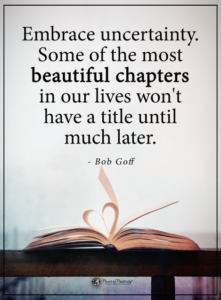Comparison: On Sharing
Recently, our district-level, content/age specific team was charged with revising our pacing guide and unit plans. We turned to districts in our state for inspiration, however quickly found that most were unavailable as they were protected by district permissions. I even reached out to two districts to establish collaborative partnerships, and I was swiftly told, “No, thank you.”. I raised this issue in my #4OCFPLN voxer group – Why are these resources not openly shared?
At the same time, I thought about how other professions work compared to education. In medicine, I see parallels to the field of education – yet, simultaneously, I see many areas where educational leaders could learn a lot from the organization, strategies, and frameworks that exist in the other sectors. In our #4OCFPLN voxer conversation, I mentioned the field of medicine. A surgeon, for example, hones his technique by training under the very best surgeons for many years. He practices. He sees a variety of conditions. He places himself in challenging environments with brilliant practitioners to learn, grow, and better serve his patients. When he finds success, he shares – publishing in journals, presenting at conferences, and encouraging others in his network to adopt new, more effective practices to ultimately reach more patients.
Is it ego? Elizabeth Merce suggested, perhaps, that surgeons have big egos so that publishing their work feeds that character trait. Are educators, as a whole, more humble community? Do we not publish our work for fear that we are being boastful? Does my state – who issues a report card grade to individual schools based heavily on student achievement and growth on standardized tests – encourage competition between districts and, simultaneously, discourage the collaboration that authentically happens when we share resources?
Laura Steinbrink explores some reasons why educators are reluctant to share in her newest post “Sharing What I do: Am I An Educational Narcissist?” She includes great questions for self-reflection.
I’ve heard many educators say that they feel that what they write would not speak to others. Yet, we all have thoughts, strategies, and innovative implementation of techniques that are novel. There is always someone who will grow from our words.
Comparison: Urgency
In medicine, there is a sense of urgency. Physicians see a new practice and push to implement that practice as soon as possible as they have the lives of their patients in their hands – sometimes, literally.
Shouldn’t we have the same sense of urgency in education?
What if improvements in the fields of medicine and business moved as slowly as changes in education? In many cases, we have one year (or, one semester, gasp!) in the life of a student. Shouldn’t we feel the same sense of urgency to create a learning environment that will positively impact the student the most? That, alone, is enough to encourage me to network, learn, grow, and change. My students need this right now.
Comparison: Specialization
In medicine, physicians highly specialize their practice. Although there are general practitioners that serve a variety of conditions, if you present a unique scenario, it is likely that you are referred to an expert in that field. Recently, I supported a friend through surgery. Given the specialization of the surgery, her already specialized physician referred her to a specific surgeon in this field who is not only a nationally renowned surgeon, but he uses the most advanced techniques and equipment available in the country. In her consultation with him, she later shared that he was brilliant but did not have all of the answers. She laughed because he was able to tell her in acute detail about her surgery, but he could not answer where her family should park to visit her in the hospital. WOW! Here is a nationally known surgeon at Duke University Hospital who has no idea where to tell his patients to park! Yet, he beautifully owned his lack of skill set in this area. In fact, he did not even skip a beat. He said, “I am confident that I can remove your tumor. However, Jeff will have to walk you through the logistics about getting here and finding your way to the surgical center.” In our classrooms, we are often expected to wear hundreds of hats in a day – each requiring a different skill set, some of which are more finely honed than others. Professionally, I believe that we are as confident as this surgeon in our strongest skill sets. However, are we equally willing to reach out for help in areas where we are weak? A recent business article that I read suggested that we should not spend an enormous amount of time worrying about our weaknesses. Instead, delegate those. Focus your attention on strengthening your strengths, sharing our knowledge, and creating a “signature style” {Hone Strengths, Delegate Weaknesses by Wendy Tomlinson of MorningBusinessChat.com} With this approach in mind, PLCs could have an entirely new purpose.
Perhaps we can grow by looking outside of the field of education. What would happen if our sense of urgency fueled us to share our strengths in intense collaboration with an intentionally selected group of educators who balance our weaknesses? Teamwork.
Sarah Fromheld explores more similarities between surgeons and educators in her recent blog “It’s a great day to save lives.“

